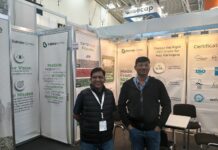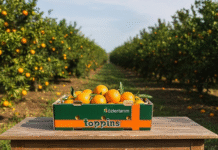
Researchers at the University of Gothenburg in Sweden have found that a paper cup that ends up in nature can also cause damage as they also contain toxic chemicals – questioning the idea of replacing single use plastic cups with paper.
Plastics pollution has accelerated a shift to alternative materials. The coffee latte you take with you from the kiosk on the corner now comes in paper cups, sometimes even with paper lids. But that cup can also harm living organisms if it ends up in nature. Researchers at the University of Gothenburg show this in a study testing the effect of disposable cups made of different materials on the larvae of the butterfly mosquito, a statement said.
“We left paper cups and plastic cups in wet sediment and water for a few weeks and followed how the leached chemicals affected the larvae. All of the mugs negatively affected the growth of mosquito larvae,” says Bethanie Carney Almroth, Professor of Environmental Science at the Department of Biology and Environmental Science at the University of Gothenburg.
A thin plastic film lines paper cups
Paper is neither fat nor water resistant, so paper that is used in food packaging material needs to be treated with a surface coating. This plastic protects the paper from the coffee in your hand. Nowadays, the plastic film is often made of polylactide, PLA, a type of bioplastic. Bioplastics are produced from renewable resources (PLA is commonly produced from corn, cassava or sugarcane) rather than fossil-fuels as is the case for 99% of plastics on the market today. PLA is often regarded as biodegradable, meaning that it can break down faster than oil-based plastics under the right conditions, but the researchers’ study shows that it can still be toxic.
“Bioplastics does not break down effectively when they end up in the environment, in water. There may be a risk that the plastic remains in nature and resulting microplastics can be ingested by animals and humans, just as other plastics do. Bioplastics contain at least as many chemicals as conventional plastic,” says Bethanie Carney Almroth.
Potential health hazard
“Some chemicals in plastics are known to be toxic, others we lack knowledge about. Paper packaging also presents a potential health hazard compared to other materials, and it’s becoming more common. We are exposed to the plastics and the associated chemicals via contact with food.”
Bethanie Carney Almroth and her research colleagues report their results in a scientific article in Environmental Pollution. They reason about the major shifts that are required to mitigate the continuing damage to the environment and threat to our health caused by the plastics pollution crisis.
“When disposable products arrived on the market after the Second World War, large campaigns were conducted to teach people to throw the products away, it was unnatural to us! Now we need to shift back and move away from disposable life styles. It is better if you bring your own mug when buying take away coffee. Or by all means, take a few minutes, sit down and drink your coffee from a porcelain mug,” says Bethanie Carney Almroth.
Binding agreements to reduce plastic use
Right now, work is underway through the UN where the world’s countries are negotiating a binding agreement to end the spread of plastics in society and nature. Professor Carney Almroth is a member of a council of scientists, SCEPT — Scientists Coalition for an Effective Plastics Treaty, which contributes scientific evidence to the negotiations. The council calls for a rapid phasing out of unnecessary and problematic plastics, as well as vigilance to avoid replacing one bad product with another.
“We at SCEPT are calling for transparency requirements within the plastics industry that forces a clear reporting of what chemicals all products contain, much like in the pharmaceutical industry. But the main goal of our work is to minimize plastic production,” says Bethanie Carney Almroth.
IndiFoodBev — authentic, impactful and influential
An English-language food and beverage processing and packaging industry B2B platform in print and web, IndiFoodBev is in its third year of publication. It is said that the Indian food and beverage industries represent approximately US$ 900 billion in revenues which implies more than 20% of the country’s GDP. Eliminating the wastage on the farmside can help to deliver more protein to a higher number of the population apart from generating sizable exports. The savings in soil, seeds, water, fertilizer, energy and ultimately food and nutrition could be the most immense contribution that country is poised to make to the moderation of climate change.
To improve your marketing and grow sales to the food and beverage processing and packaging industry, talk to us. Our research and consulting company IppStar [www.ippstar.org] can assess your potential and addressable markets in light of the competition. We can discuss marketing, communication, and sales strategies for market entry and growth.
Suppliers and service providers with a strategy and budget for targeted marketing can discuss using our hybrid print, web, video, and social media channels to create brand recognition linked to market relevance. Our technical writers are ready to meet you and your customers for content.
The second largest producer of fruit and vegetables in the world is continuously expanding processing capacities and delivery systems with appropriate innovative technologies. We cover product and consumer trends, nutrition, processing, research, equipment and packaging from farm to thali. Get our 2025 media kit and recalibrate your role in this dynamic market. Enhance your visibility and relevance to existing markets and turn potential customers into conversations. Ask for a sample copy of our bi-monthly in print or our weekly IndiFoodBev eZine each Wednesday.
For editorial info@ippgroup.in — for advertisement ads1@ippgroup.in and for subscriptions subscription@ippgroup.in
Naresh Khanna – 10 February 2025
Subscribe Now










